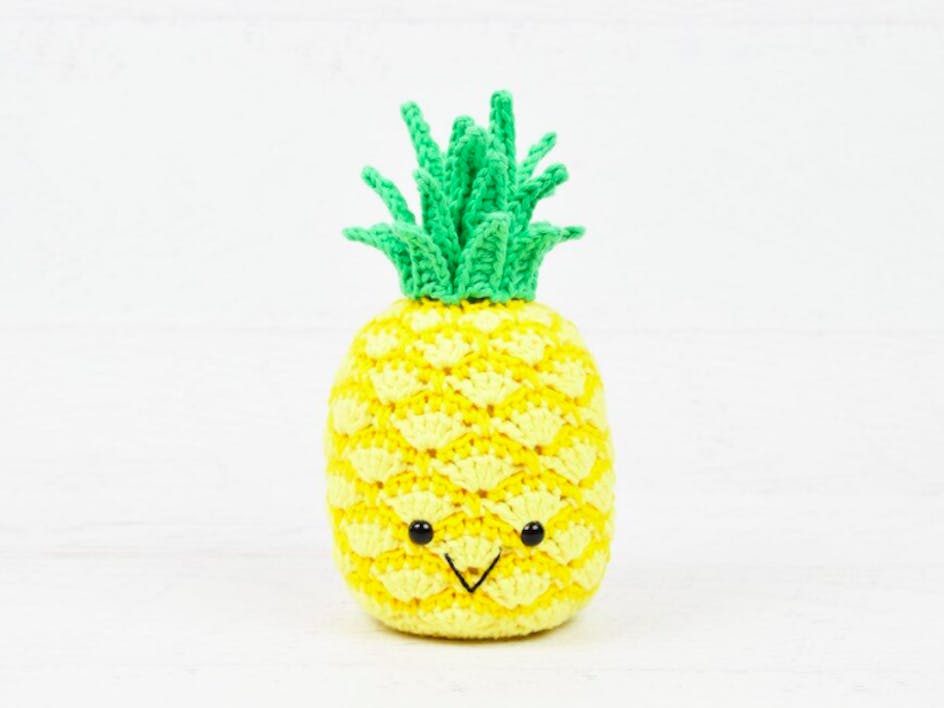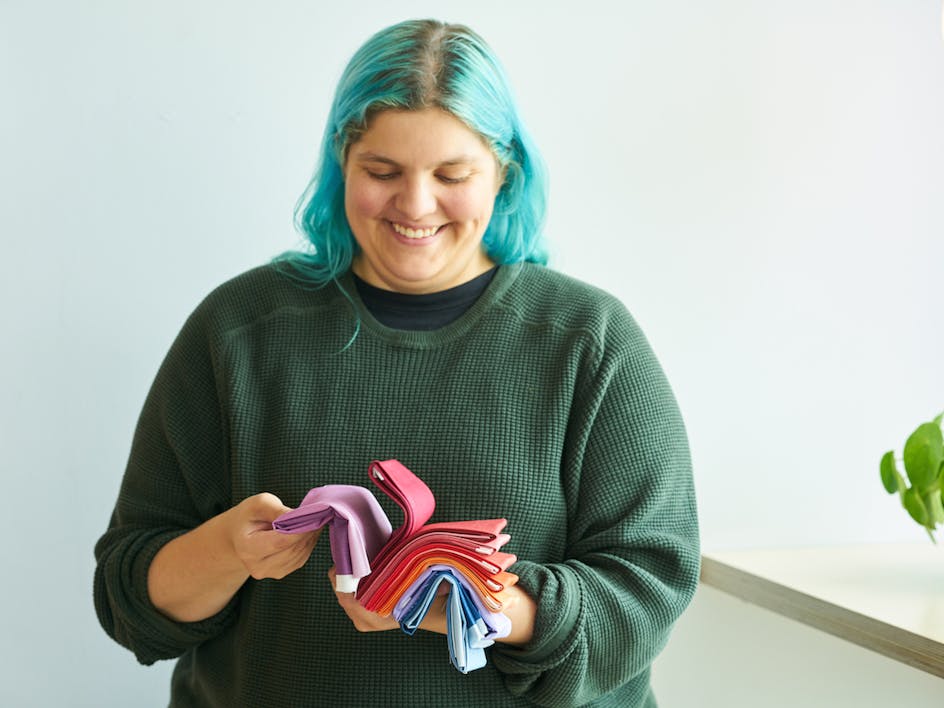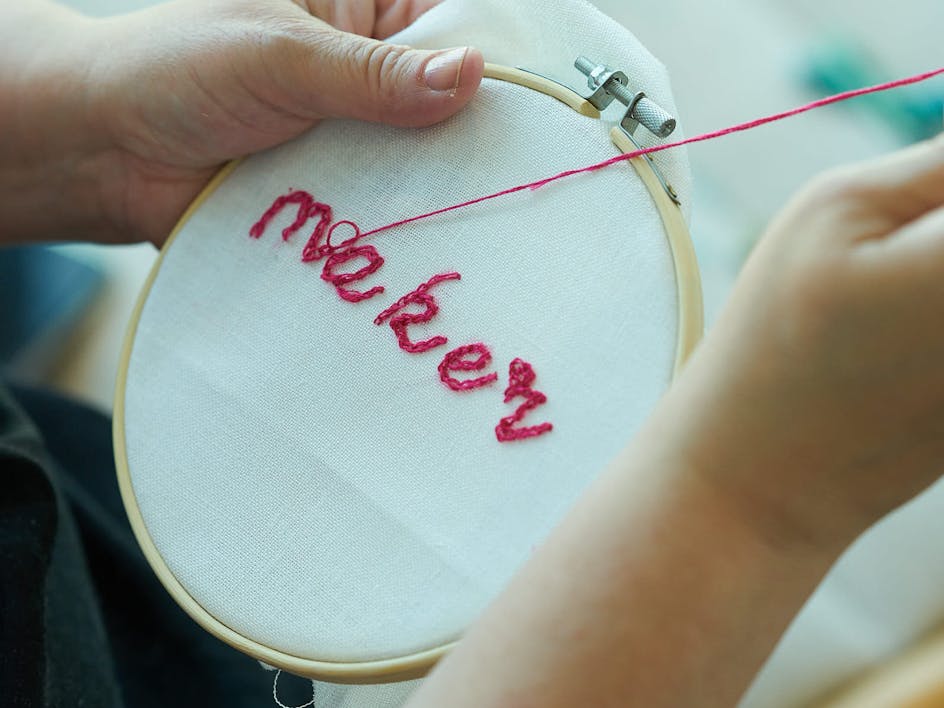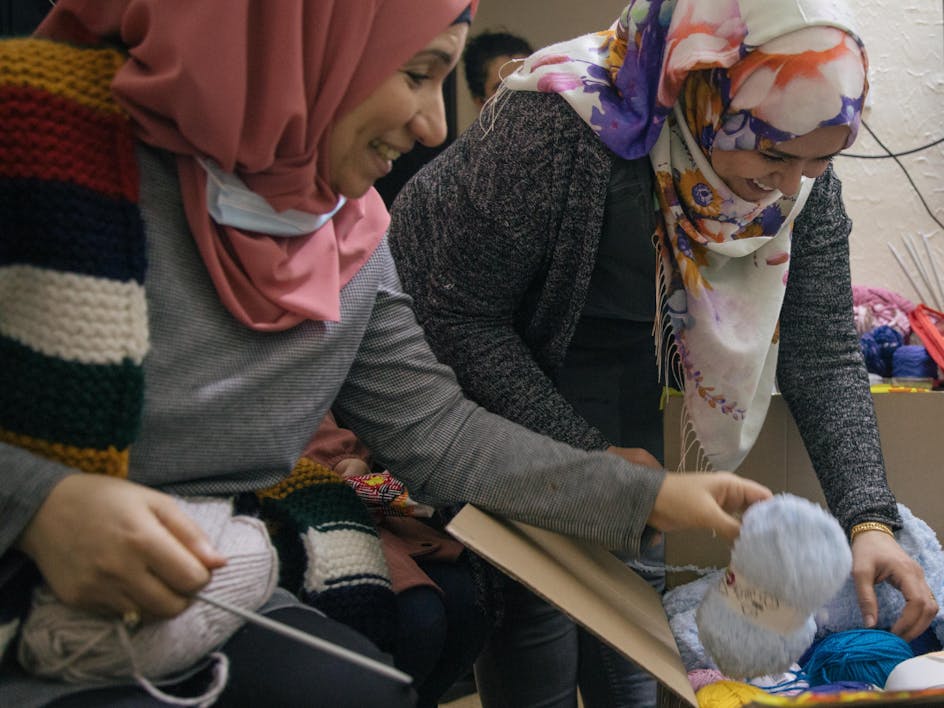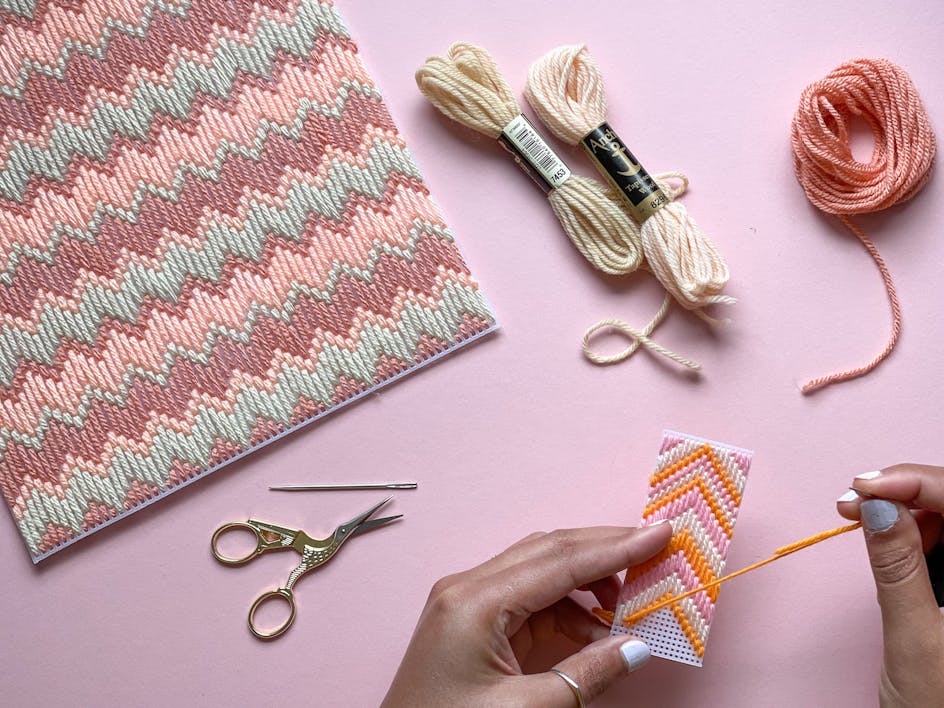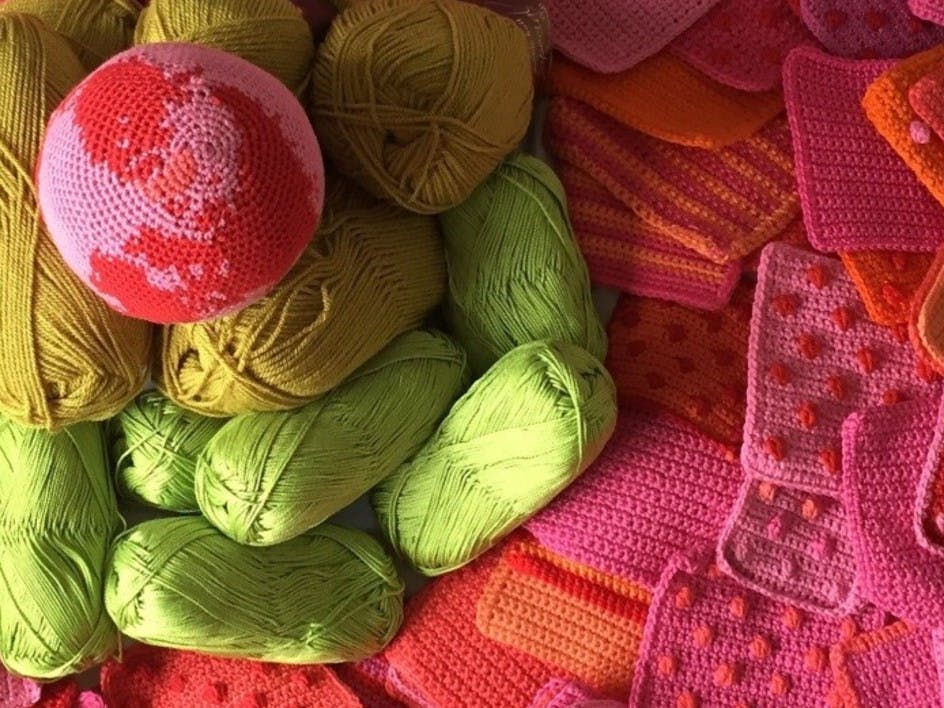Get your stitch on with our beginners' guide to tapestry
Published on March 22, 2021 4 min readDreaming of adorning your home with your own DIY tapestry? Our ultimate beginners' guide to tapestry is a fantastic place to start! Tapestry or Needlepoint is the craft of stitching on to canvas mesh to create colorful designs. We’ll share all the tips, tricks and techniques you need to learn how to make a tapestry. Learn how to needlepoint tapestry and create embroidered designs that will have pride of place in your home for many years to come.
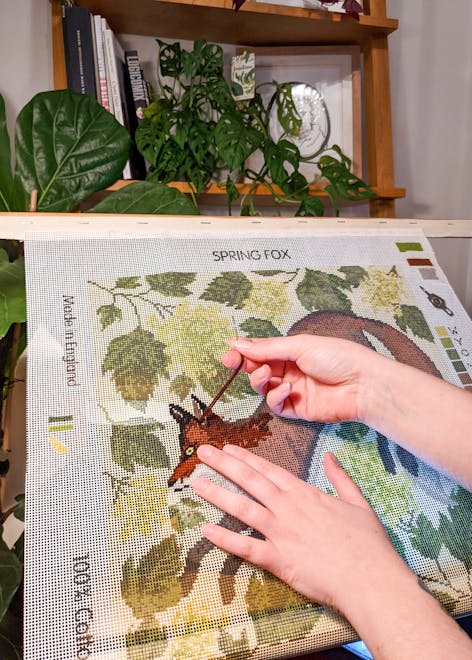
What is tapestry?
To put it simply: tapestry is created by stitching interlocking rows of thread or wool onto an open-weave canvas. You might create a tapestry to be made into a cushion or footstool, or perhaps a gorgeous wall hanging. In the US, tapestry is often referred to as needlepoint or canvas work.
What’s the difference between tapestry and embroidery?
You might be wondering what the difference is between embroidery and tapestry, and it’s a very good question! Embroidery is simply decorating fabrics with beautiful designs. You don’t tend to cover an entire canvas or piece of fabric with embroidery; but with tapestry you are stitching on an open grid, creating a fabric out of stitches.
While there are countless embroidery stitches to choose from, with tapestry you tend to stick to one or two. Two basic stitches you’ll need for a smooth-stitch traditional tapestry: the tent (aka the continental stitch), and the basketweave stitch. There’s plenty of others, but we’ll start with these!
Needlepoint is most similar to counted cross stitch. The main difference is the materials you use - cross-stitchers will be used to Aida and evenweave fabrics and stranded cotton floss, whereas in Tapestry you'll need a single thread or double thread canvas (Mono, Interlock or Penelope), and soft cotton or wool threads.
Tapestry kits
If you’re a newbie to tapestry, then tapestry kits are great to help you get started. Tapestry kits come complete with all the materials you need to complete the project, so you don’t need to do any guesswork with wool quantities and the right size canvas. Tapestry kits also benefit from having the design printed onto the canvas, often with a color chart to work from. This printed canvas gives you a guide to work from, a bit like coloring in!
Top tapestry kits to choose from
What do you need to get started with tapestry?
Canvas
The canvas is the starting point of any tapestry! If you’re designing your own tapestry or going freestyle, you’ll need a fresh open-weave canvas to start with.
Wool
Tapestry wool is thicker than the threads you might use for embroidery or cross stitch. It comes in a huge array of colors for every project. You will also find that most kits come with details of the brand and color code of the wool you use, so if for any reason you run out or need extra, you know where to buy more.
Tapestry wool
Optional tapestry tools
You might find it useful to use a tapestry frame, but many makers don’t use one at all. If you’re working on larger pieces, a frame could help to see the full design, rather than working on individual areas.
Once you get into tapestry, you’ll find yourself forever threading needles, so a needle threader will come in handy! We also recommend having a pair of embroidery scissors on hand.

Tapestry stitches for beginners
Once you start stitching, you’ll find that the stitches you’ll find yourself using most often are half cross stitch, continental stitch (also known as tent stitch) and basket stitch.
In Katie's intro guide to needlepoint tapestry, Katie shows you how to master three of the most popular (and super simple!) tapestry stitches. Plus you'll get to grips with all the things you need to know for your first needlepoint tapestry kit.
- Learn how to attach your tapestry canvas to your frame
- Learn how to Half Cross Stitch
- Learn how to secure your thread
- Learn how to Continental Stitch
- Learn how to Basket Stitch
Want to put your new skills into practice? The Bothy Threads spring fox kit Katie demonstrated is a great one for beginners.








